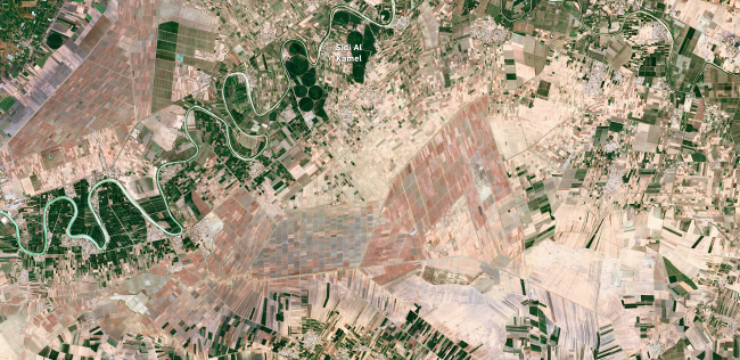Conventional detection methods, such as sample taken and looking under a microscope to count the bits is time-consuming, labor-intensive, and often ineffective at identifying small particles, making them impractical for large-scale monitoring.
Read more
The Abu Dhabi Fund for Development (ADFD) and the International Center for Biosaline Agriculture (ICBA) will fund and develop the Middle East and North Africa’s first comprehensive guide for establishing and operating soil museums.
Read more
Since the 1990’s scientists in Ukraine and overseas have been saying that the land can be safely used again despite contamination by radiocaesium and radiostrontium. But political complexities have meant that the land remains officially abandoned. That hasn’t stopped a few farmers taking matters into their own hands and beginning unofficial production in some areas. The new study has confirmed that the farmers were right – crops can be grown safely in most areas.
Read more
🍺 BEER: Spirulina, a blue-green algae superfood packed with protein, copper, and B vitamins, is growing in popularity among international brewers. RedDot Brewhouse, located next to the Singapore Botanical Gardens, offers a spirulina-infused lager.
Read more
Tea cultivation, beloved globally, thrives in fertile, acidic soils. However, the overuse of chemical fertilizers has led to soil degradation, negatively affecting both the yield and quality of tea. Intercropping—growing multiple crops together—has emerged as a potential solution to enhance soil health and mitigate environmental damage. This is also known as permaculture.
Read more
A prolonged drought in Morocco is causing serious problems for the agricultural sector. Local Authorities predict that the 2024 wheat harvest will be reduced by almost 50 per cent. The Arab Spring happened during a drought and raising wheat prices. Can we expect upheaval in the Magreb connected to this prolonged drought? This image above, […]
Read more
The world's soils are becoming too salty for farming. These man-made problems are cause for concern but remediation of soils can be done.
Read more
Despite their initial success, early Islamic P&B agricultural systems in Israel were largely abandoned after the Crusader conquest and, surprisingly, were not reestablished. However, these traditional systems found renewed application in regions such as Iran, Algeria, the Gaza Strip, and parts of Iberia since the Middle Ages, where they continue to support agriculture in marginal environments.
Read more
Slain Japanese doctor and canal builder Tetsu Nakamura gets his dream honored and 20 mile canal opens this year
Read more
Turkey's overuse of aquifers is causing a strain on the land and deadly sinkholes threaten farms and lives.
Read more
As a way to cut down on the illegal drug trade, Morocco decides to pardon cannabis growers making their practices legal.
Read more
Like a chip off the old chocolate block, the Dr. Bronners’ brand we know and adore for its biodegradable castile soap, is now in the chocolate business. And like other brands we love –– such as Nature’s Path –– is making a commitment to regenerative farming.
Read more
In 80% of African countries people moved toward rivers and into cities during or following drought, increasing the number of people living in flood-risk areas in recent decades, according to a new study. This resettlement pattern will likely intensify in coming decades as climate change is expected to make droughts more frequent and severe.
Read more
Plant stressor sensor Treetoscope has raised $7M USD in a seed fundraising round. The IoT device gives farmers information about when to irrigate by applying AI and sensors to understand plant water needs real time. Investment will be applied towards expanding sales and R&D.
Read more
America and the world sees a rubber shortage. A new plan to grow it in America, sustainably.
Read more















